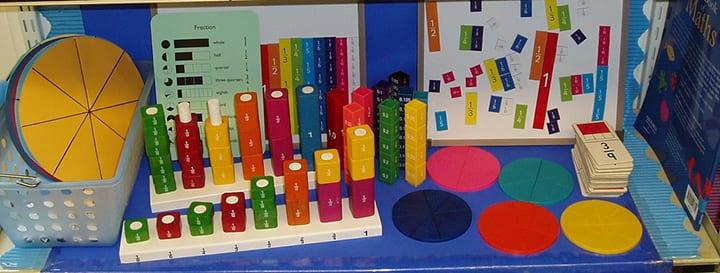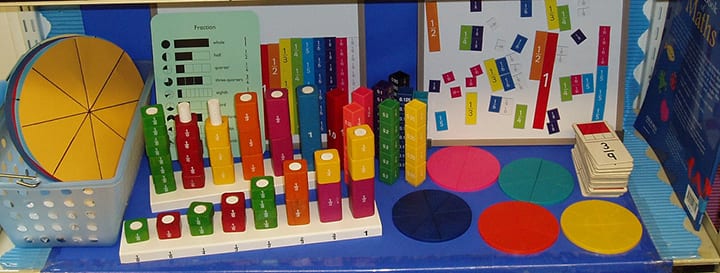Struggling with learning fractions? It can take some time and repetitive practice to really get them down. Here, Tucson tutor Blake C. shares his best tips…
Fraction worksheets are usually meant to get us to visualize fractions as parts to a whole. Some of us may vaguely remember being asked to identify fractions by looking at the number of shaded regions of a given shape cut into so many pieces. Others among us have little ones who are confronting this type of fraction worksheet for the first time and who may be having trouble.
As a parent or a student, we first need to understand that the purpose of these worksheets is to understand that certain things in our everyday experience of the world can and must be divided. We can most easily understand the abstract concept of fractions when we give it a real-world, common-sense context. Here are some helpful tips to get this right the first time.
1. Think about the shapes on your fraction worksheets in terms of slices or portions of your favorite treats. Pizza works great when you’re dealing with circles. For squares, think of cake or brownies. This will help you give a real-world context to what you’re being asked.
2. Think of the total amount of slices or portions as the denominator of your fraction. It’s how many pieces you started out with.
3. Think of the shaded regions as the numerator of your fraction. It’s how many slices or portions somebody has already eaten.
4. Think of the slice itself as the portion size, and think about the number of slices in each whole pizza or whole tray of sweets as the fixed denominator. This number will not change. For example, if you have two pizzas (circles), each of which is cut into fourths, and you are asked what fraction is represented when both pizzas are fully shaded, since each pizza has 4 pieces our answer would be 8 over 4. What this denominator tells us is that each slice, no matter how many slices we have, represents one quarter of a full pizza.
5. Don’t let the number of shapes get you confused. The denominator is always the number of slices or portions in each individual shape. The number that will change is the numerator, which represents the number of shaded slices or portions. If we have 50 trays of brownies each cut into 8 squares with all the squares shaded, then we have 50 trays with 8 pieces each. This means a total of 400 pieces, but since each tray is cut into 8ths our fraction must be 400 over 8. No matter how many trays we have, we are always answering in terms of 8ths of one whole tray.
The main thing with these kinds of fraction worksheets is just to keep your concepts straight. The numerator is the number of shaded regions you have in total. The denominator is the number of pieces in each individual shape. Remember not to let the number of individual shapes get you confused. Finally, make the effort to connect this to your everyday experience; knowing why something is important makes a big difference in how you learn it and whether or not you’re going to remember it.
 Blake C. tutors in various subjects, including math, reading, and SAT prep, in Tucson, AZ and online. A Flinn Scholar, Blake C. graduated from The University of Arizona with a degree in Business Management in 2007 and later returned for a second Bachelor’s in Music Theory History and Criticism, which was awarded in December of 2013. Learn more about Blake here!
Blake C. tutors in various subjects, including math, reading, and SAT prep, in Tucson, AZ and online. A Flinn Scholar, Blake C. graduated from The University of Arizona with a degree in Business Management in 2007 and later returned for a second Bachelor’s in Music Theory History and Criticism, which was awarded in December of 2013. Learn more about Blake here!
 Photo by misskprimary
Photo by misskprimary
Suzy S.

